What Is DLC (Dry Lean Concrete) | Advantage of DLC (Dry Lean Concrete)
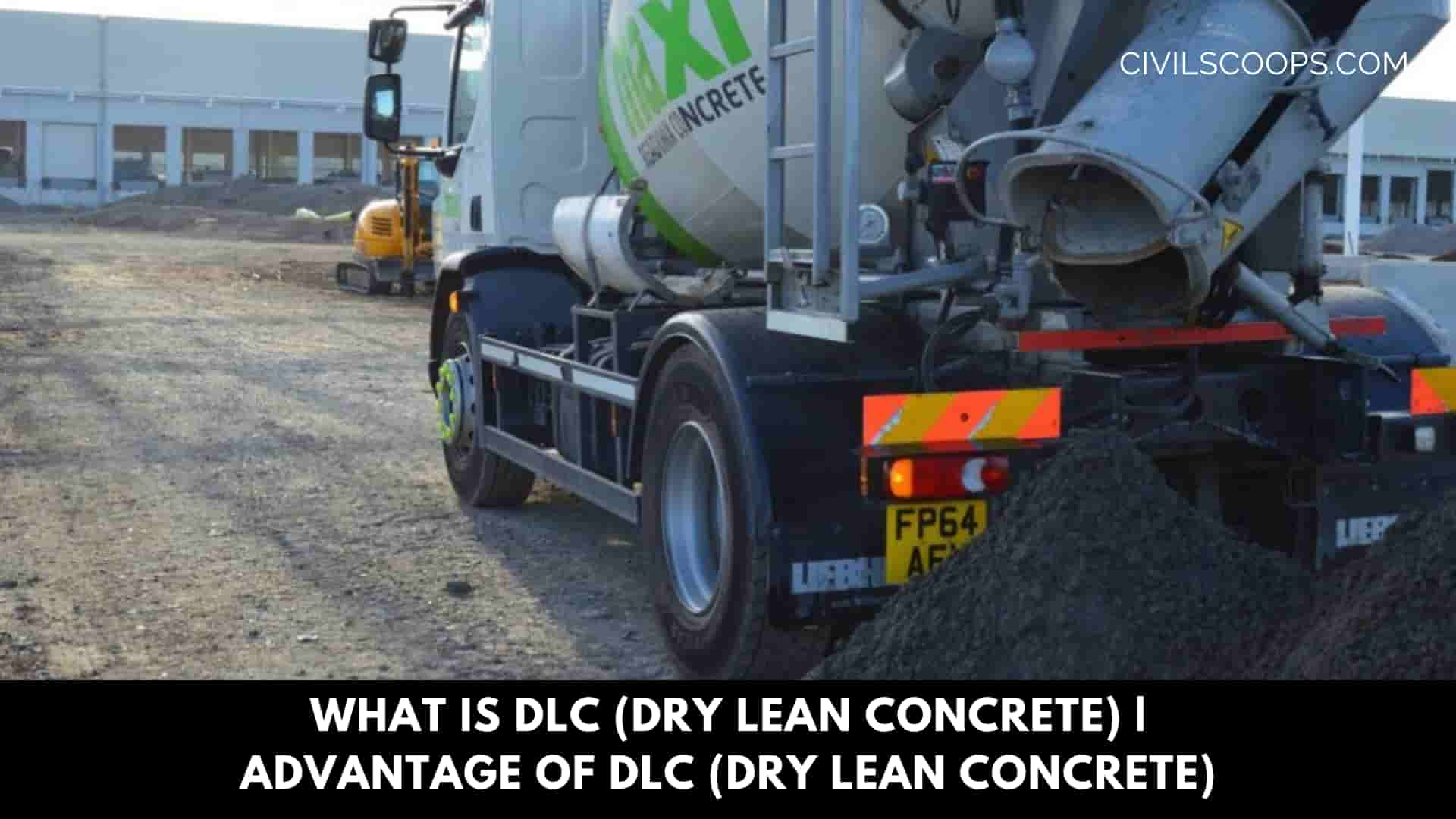
Table of Contents
Dry Lean Concrete: Everything You Need to Know About Dry Lean Concrete

Dry Lean Concrete is a mixture in which the amount of cement is less than the amount of liquid that is present in the layers.
This makes it ideal as a base layer on which other types of concrete are placed on top. It is good for a flat surface on uneven or dirty terrain.
Concrete with high water content is considered thin because it has a lower cement concentration compared to other types of paving and building materials of this class.
It is often used as a patch between bricks or other pieces of infrastructure to create a tight seal.
Dry Lean concrete bursts over time if it is not correctly applied or mixed according to the correct specifications. Careful preparation is the key to the success of dry lean concrete.
Dry Lean Concrete is an important part of the modern rigid floor. It is smooth concrete with a large proportion of aggregate in relation to cement than conventional concrete and is generally used as a base/sub-base for hard paving.
The dry lean concrete is compacted using a 10 to 12T vibrating roller in the field. Extra dry lean concrete is mainly done with ordinary Portland cement.
It consists of crushed sand, cement, and water. The DLC is a sub-base for concrete pavements; the minimum cement content in lean concrete must not be less than 150 kg/cum concrete (according to MORTH).
For DLC Cube Test, each cube must have an individual strength of 7.5mpa or more and an average of 5 cubes must have a force greater than 10mpa. The DLC plate must have an average thickness of 150 mm.
Dry lean concrete is manufactured with ordinary Portland cement according to the IRC specification: SP-49: 1998.
Dry Lean Concrete Mixing Ratio
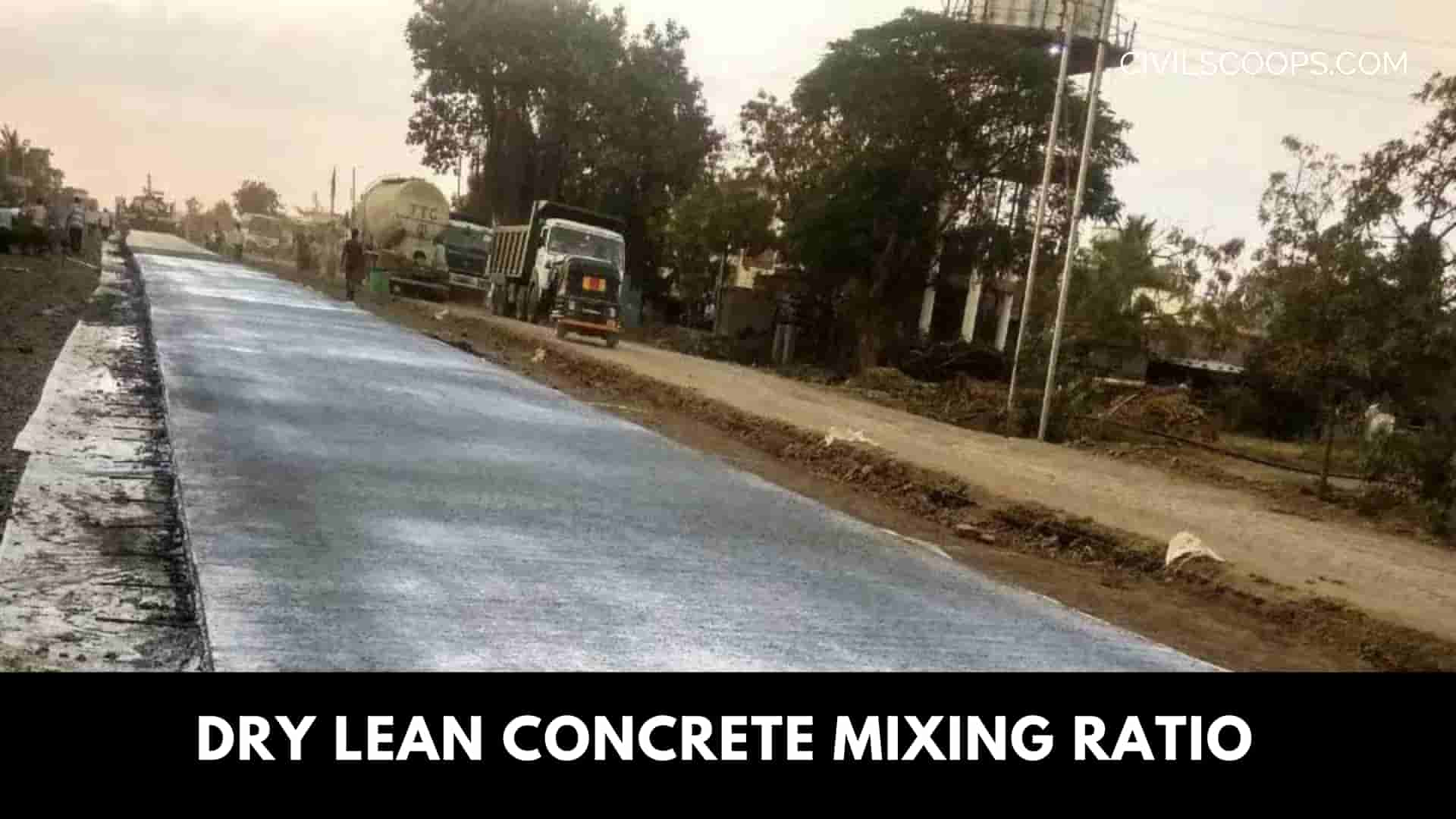
The design of the DLC mix is not comparable with the conventional concrete mix. In contrast to conventional concrete mixtures, the water/cement ratio is not the criterion for the design of the DLC mixture, but it is the optimum moisture content (OMC) to guarantee the total compaction of the concrete under lamination.
The mixture should not be too moist, because it gets stuck in the roll drums. Therefore, it is important to determine the ideal moisture content for the correct compaction and mixing ratios, i.e. the aggregate/cement ratio to produce the required compaction and compressive strength of the concrete.
Optimal Moisture Content of Dry Lean Concrete
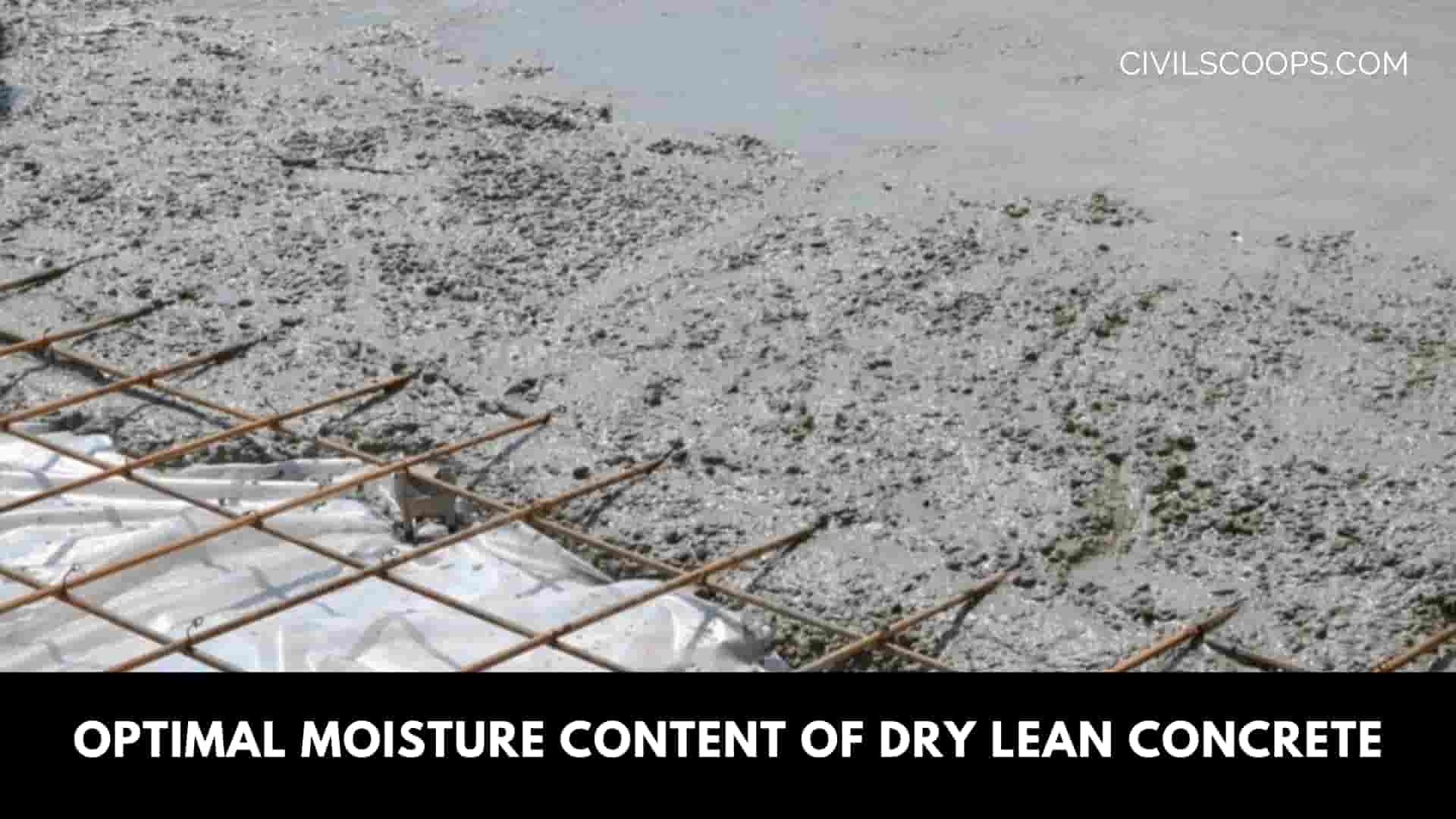
The ideal moisture content for a DLC mix is determined to guarantee complete roll compaction. The ideal moisture content is determined to achieve complete compaction and maximum dry density.
It is usually determined by compressing DLC hubs using a vibrating hammer. The Vee Bee Consistometer Test can be used in the laboratory to know approximately the mixtures of OMC and DLC.
According to IRC SP-49, 1988, the minimum cement content in a DLC must not be less than 150 kg / m3 of concrete.
If this minimum cement content is not sufficient to produce concrete with the specified strength, it must be increased if necessary.
However, this specified amount of cement is for OPC. In the case of PPC, nothing is quantified about the amount of cement.
Concrete Strength of DLC

The average compressive strength of a DLC mixture should not be less than 10 MPa in 7 days. The compressive strength of the cube for 7 days is the main acceptance criterion for dry lean concrete mixes.
Therefore, standard cubes prepared from dry lean concrete mixtures were tested for strength development at 7 days.
Concrete Classification of DLC
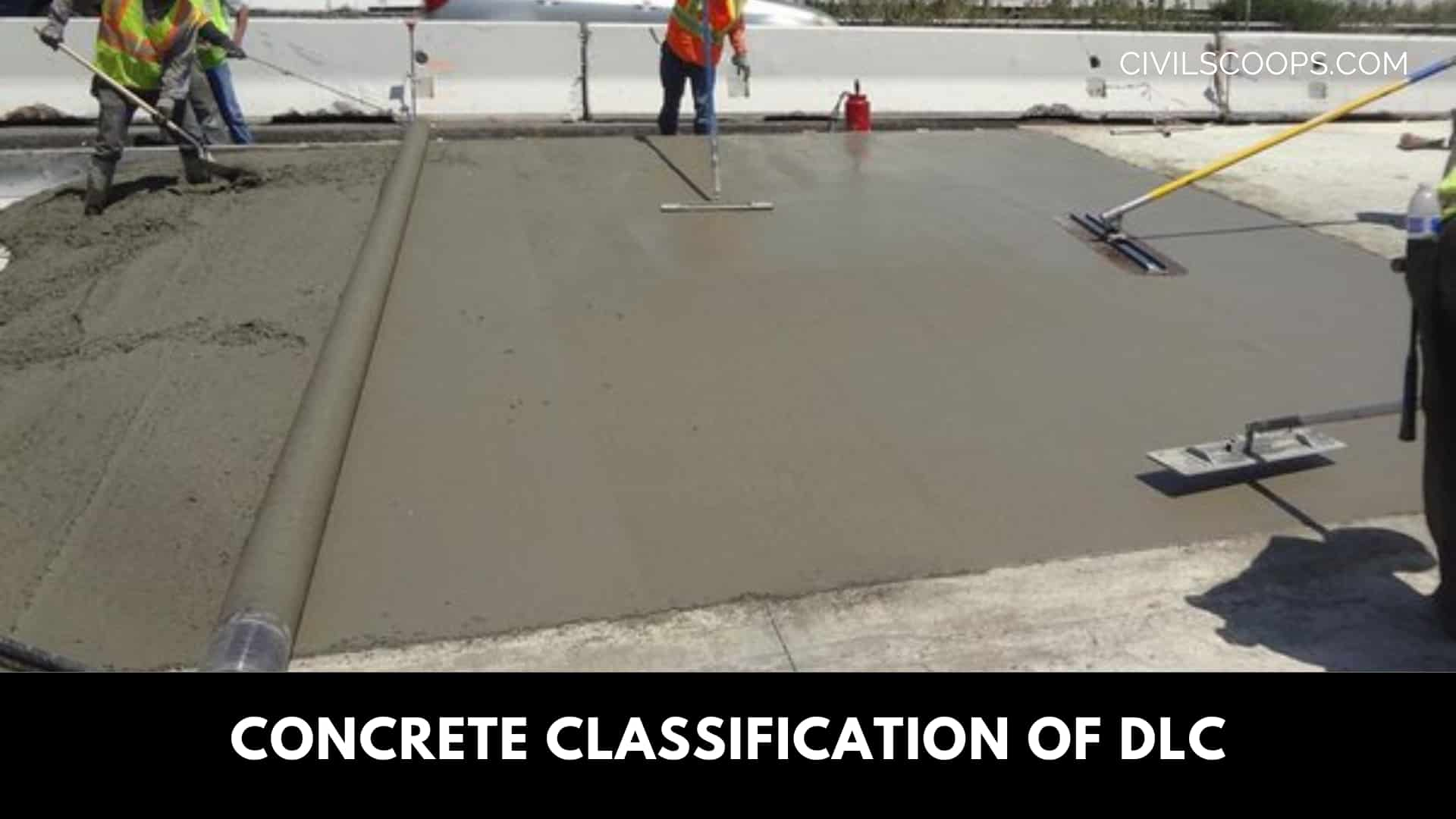
As mentioned earlier, the main ingredients of concrete are cement, fine aggregate (sand), and coarse aggregate (gravel or crushed rock).
It is common to specify a specific concrete by the proportions (by weight) of these constituents and their characteristics, for example, a 1: 2: 4 concrete refers to a specific concrete manufactured by mixing cement, sand, and broken stone in a 1: 2: Ratio 4 (with a specified type of cement, water-cement ratio, maximum aggregate size, etc.).
This classification that specifies the proportions of constituents and their characteristics is called prescriptive specifications and is based on the hope that adherence to these prescriptive specifications will result in satisfactory performance.
Alternatively, specifications that specify requirements for desirable concrete properties, such as strength, workability, etc., are stipulated and are called performance-oriented specifications.
Based on these considerations, concrete can be classified as nominal or shotcrete.
Sometimes, concrete is classified as controlled concrete and ordinary concrete, depending on the levels of control exercised in the works and the method of the proportion of the concrete mixtures.
Consequently, concrete with proportions of ingredients fixed by the design of the concrete mixtures with preliminary tests is called controlled concrete, while common concrete is that in which the nominal mixtures are adopted.
In IS: 456-2000, there is nothing like uncontrolled concrete: only the degree of control varies from very good to bad or no control at all.
In addition, to mix the proportion, quality control includes a selection of appropriate concrete materials after proper testing, adequate labor in dosing, mixing, transport, placement, compaction, and curing, along with the necessary checks and tests for acceptance of quality.
Everything You Need to Know About Dry Lean Concrete
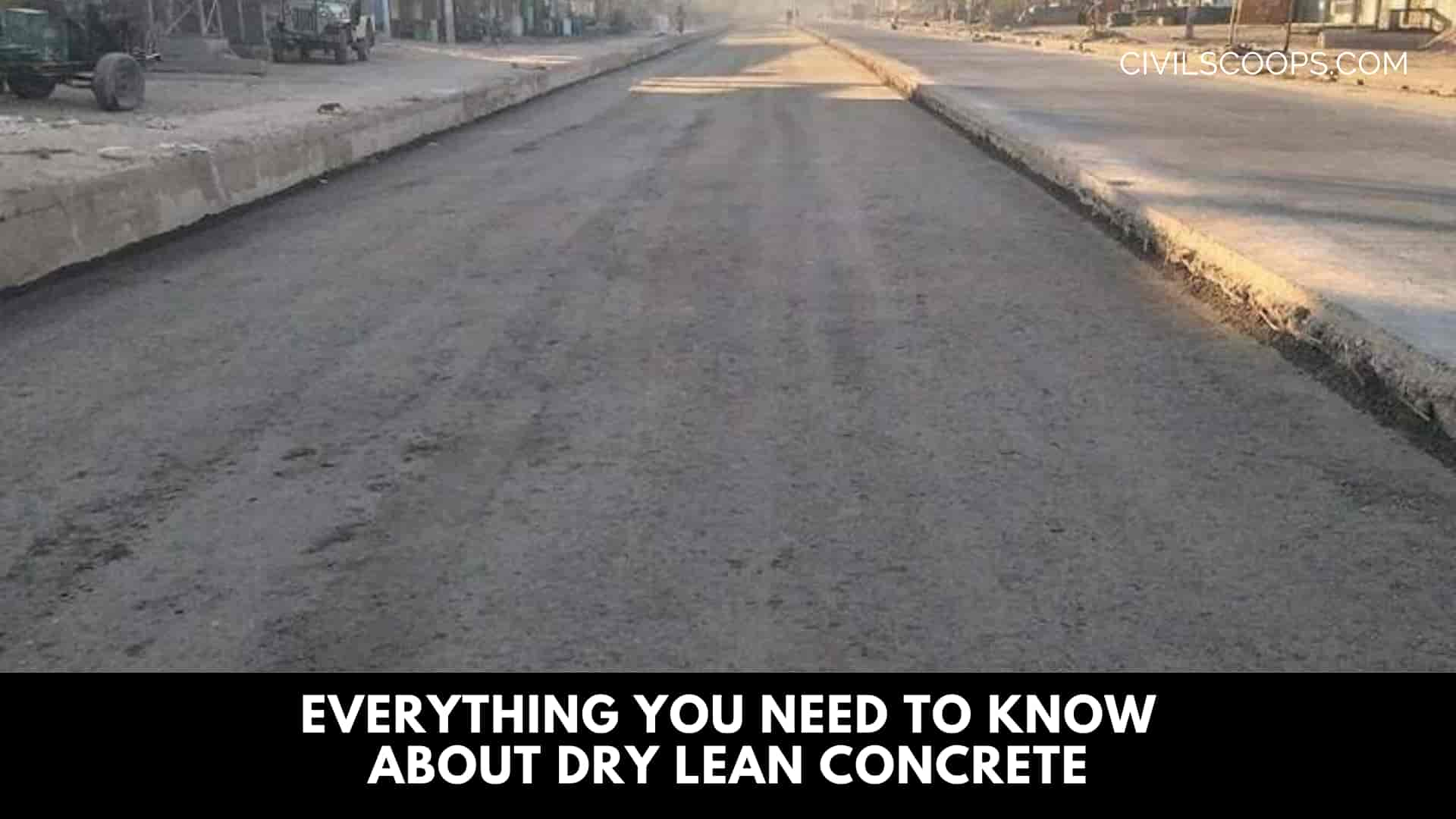
- Dry lean concrete must provide a firm base to withstand pavement-quality traffic.
- There should be no connection between pavement-quality traffic and dry concrete.
- After laying the dry lean concrete, with the help of the paver, and compacting with roller passes.
- Minimum of eight times up and down, that is, a total of 16 passes. It must be sprayed with class MCO bitumen primer.
- Cracks will appear from 10 to 15 distances, depending on the amount of cement, the classification of the aggregate, temperature, and wind speed, before placing the 500-micron pavement-quality traffic antistatic polyethylene layer.
- The resistance of the dry lean concrete cube must be 5 N / mm2 and above. Higher cement depends on the strength required for the sub-base.
- The maximum size of the aggregate must not exceed 20 mm.
- A good mixture falls in the middle portion; a weaker mixture falls in the extremities. Take a sample from the end and compare it with the average portion of the concrete.
- The difference in strength should not vary by more than 6%.
Why People Are Using Dry Lean Concrete?
The main advantages of using DLC as a base layer include the provision of uniform and strong support, high resistance to deformation, greater efficiency in the load transfer in the joints, adequate fixation of the formwork, and proper positioning of the boom cradles to semi-construction – mechanized construction equipment during the DLC.
Also Read: 14 Difference Between CPM and PERT | What Is CPM | What Is PERT
Advantages оf Dry Lean Concrete
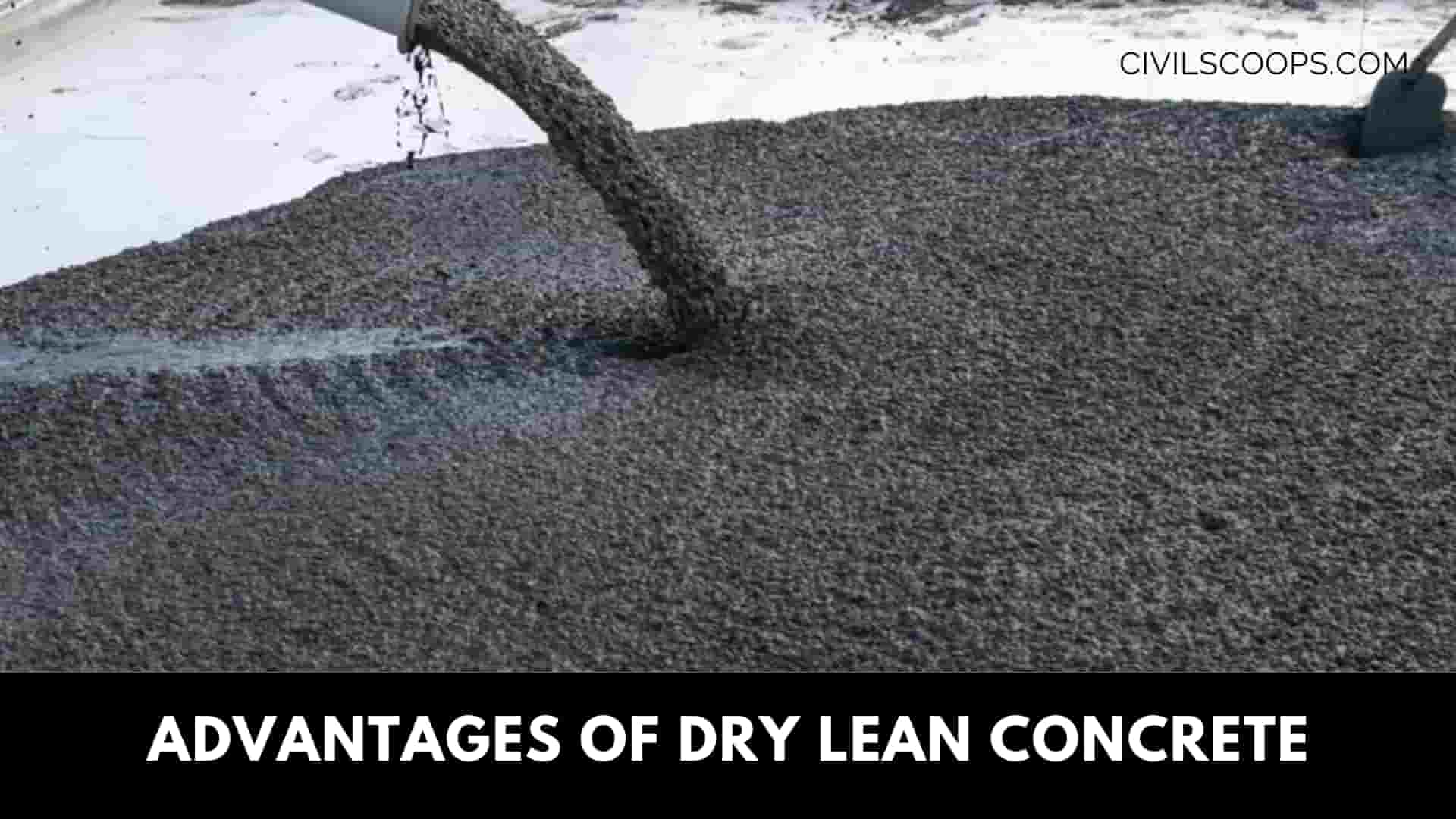
- Provides even stronger support to the hard floor.
- It has a high resistance to deformation.
- It has excellent improved load transfer efficiency at the joints.
- Helps in all weather conditions.
- There is a final reduction in the depth of the slab due to the DLC as a base layer.
[su_box title=”FAQ” style=”default” box_color=”#333333″ title_color=”#FFFFFF” radius=”3″ class=”” id=””]
Dry Lean Concrete
Dry Lean Concrete Is Cement Concrete with Low Slump as Well as Low Cement Which Is Being Laid as a First Layer for Rigid Pavement Over Sub-Base (GSB), Rolled & Compacted by Mechanical Means.
Dry Lean Concrete Mix Proportions
The concrete mix shall be proportioned with a maximum aggregate cement ratio of 14:1 where OPC is used and 12:1 where PPC or PSC is used. The minimum cementitious materials content shall not be less than 140 kg/cum of concrete.
[/su_box]
[su_note note_color=”#F2F2F2 ” text_color=”#333333″ radius=”3″ class=”” id=””]
Like this post? Share it with your friends!
Suggested Read –
- 20 Types of Construction Beam & Their Uses
- 14 Types of Plaster Finishes (List of Plaster Finishing)
- All About SBC of Soil | What Is SBC of Soil | Safe Bearing Capacity of Soil
- What Is Admixture | 26 Types of Admixtures | Advantages & Disadvantages of Admixture
- What Is Pneumatic Structures | Types of Pneumatic Structures | Advantages & Disadvantages of Pneumatic Structures | Uses of the Pneumatic Structures
[/su_note]
Originally posted 2023-03-27 10:53:44.
